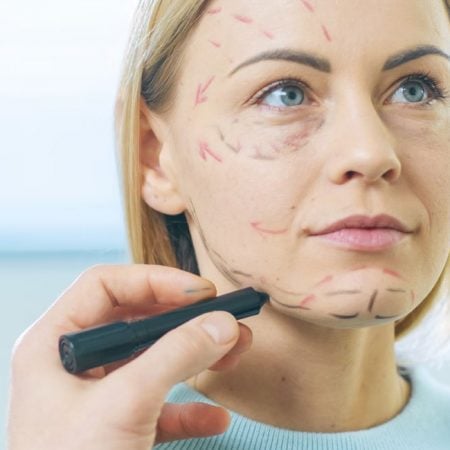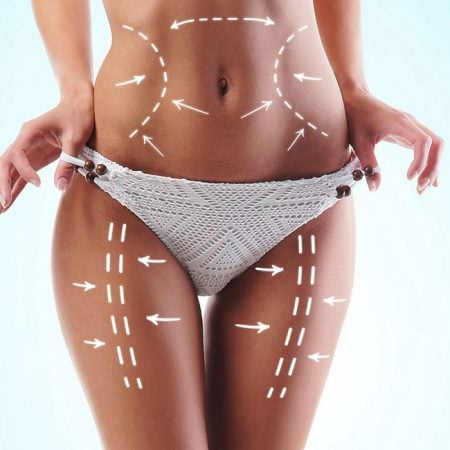There are many types of face lifts and the SMAS lift is just one type that your plastic surgeon may choose here at the Infinity Life Center. Our surgeons are well versed in the multitude of these procedures and the SMAS lift is done frequently.
SMAS FACE LIFT
The SMAS face lift is a certain type which plastic surgeons do to reverse the signs of more severe facial aging. The area called SMAS is the layer of connective tissue that lies between the outer skin layer and the deeper muscles beneath the skin. The doctor who does the surgery tightens the SMAS layer so your face becomes smoother and more youthful appearing. It works on the bulk of the face, including the perinasal area and the neck, which is repaired through a chin incision.
The incision is made along the hairline and is extended in front of the ear and below the earlobe. The deeper facial muscles are separated from the superficial facial muscles and the skin. The skin is tightened and then the underlying muscle is tightened, if necessary. After all muscles are tightened, the skin is redraped over the tighter muscles, leaving skin that is smooth and without wrinkles. Some skin will need to be trimmed off so that the excess skin isn’t part of the redraping.
The SMAS layer can be elevated to counteract the noticeable effects of gravity. It is dissected out of the tissues and is raised along the deeper muscles so that the cheeks appear higher and have a more normal appearance. Sometimes this is all it takes to restore a more youthful-appearing face. Doing this makes the nasolabial fold go away or at least lessen its depth. In the lower chin incision, the platysma or neck muscle that controls facial expression is repaired within the connective tissue and helps the neck look better as well as the face.
More swelling with a SMAS face lift
In a SMAS face lift, there is a lot more dissection in the deeper layers. Due to this there there tends to be a lot of soft tissue swelling in this type of procedure. There is also greater risk of nerve damage as the nerves pass through muscle layers and through the SMAS. Smokers tend to have a greater risk of complications from this procedure and there is more scarring if you smoke. This is why you need a more experienced surgeon as we have at our center for this type of surgery, its not just a skin operation but the results can be great.
SMAS stands for superficial musculoaponeurotic system
It fans out along the face and is strong enough to suspend heavy facial tissue. It involves creating two layers in the face lift instead of one layer. The SMAS is continuous with the platysma in the neck so bringing up the SMAS so it is higher in the face also brings up neck tissue. The SMAS also connects to facial muscles located in the perioral area, the periorbital area and the nasolabial area. The nerve branches lie deep to the SMAS and can be damaged when the underlayer of the SMAS is dissected out. This is why the surgeon cannot go deeper than the temporal fascia so as to save the nerve branches of the facial nerve.
Who should not have a SMAS face lift?
Those who should not have a SMAS face lift are those with diabetes, those on long term steroid therapy and those with connective tissue disorders, such as Ehlers Danlos syndrome. Age alone should not be a factor because people in their seventies and eighties can easily live another fifteen years. People who smoke have a twelve fold incidence of sloughing of tissue than those who do not smoke. Smokers also get more hematomas than those who do not smoke. Patients must stop smoking for a month before and a month after the procedure. The psychological state of the patient must be taken into account. Those with psychotic disorders such as schizophrenia should be withheld from having significant facial surgery, including the SMAS facelift.








